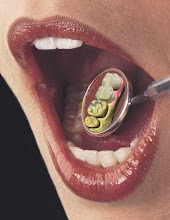Some of you have been asking about your parameters or just changing them to random numbers. Here’s what they mean and what I recommend for settings:
Under Settings (top menu bar), click Parameters, then...(all numbers are in microns)
CONTACT STRENGTH is how heavy you want your initial interproximal contact proposal. 25 is just green, 50 is a spot of yellow, 75 is half yellow-half green, 100 is a spot of red, 125 is way too much. Start at +75.
OCCLUSAL STRENGTH is the strength of your occlusal contact. This tends to be too heavy by default. Start at -150. If they are still coming out high, lower to -200 or even -250.
OCCLUSAL OFFSET takes your restoration out of occlusion. It’s naturally 100 microns too high, so -100 is even. Start at -150. Take to -200 if you’re consistently high.
MARGIN THICKNESS gives extra around your margin to avoid submargination. I put everybody at 100.
OCCLUSAL THICKNESS is your minimal occlusal thickness, below which you will see the light blue “you’re too thin” warning. Set to 1000 (1.0mm) if you’re using emax, or 1500 (1.5mm) for porcelain.
RADIAL THICKNESS is your minimal thickness for the axial walls. Set to 500.
VENEER THICKNESS is 500. It only applies when you’re doing veneers in biogeneric, which is tedious and painful. You’ll correlate veneers.
ADHESIVE GAP is your kavo surface (margins except gingival) for inlays and onlays. It prevents binding or flash. Set to 30. Raise to 50 if your inlays aren’t going down easily.
SPACER is your internal spacer. The software gives you 100 microns immediately, but that’s not enough. Start at 30. If it feels loose, lower to 20 or 10. If it’s tight, raise to 50.
SCAN STEP is always 3, unless you’re a lab.
These aren't the "official" settings and if you find something else works better, keep it. I've found in the majority of offices these numbers are perfect, but you could be an exception. Every dentist is exceptional in some way!
Subscribe to:
Post Comments (Atom)

No comments:
Post a Comment